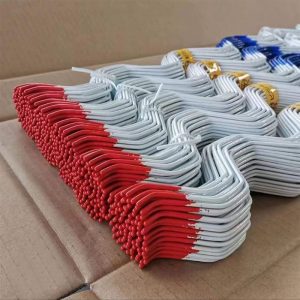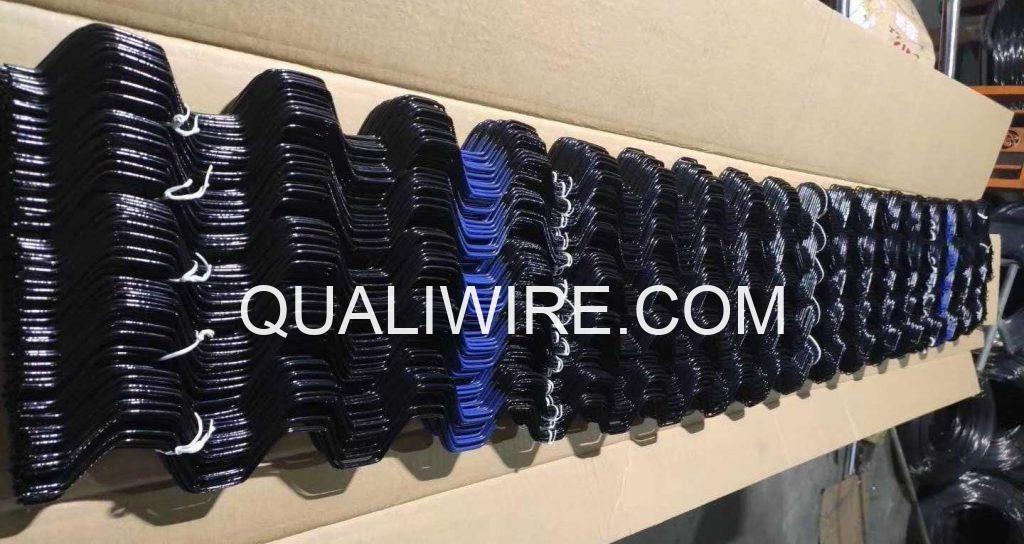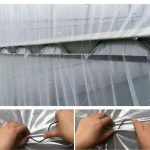How to Select Zigzag Wiggle Wire for Greenhouses

The wiggle wire for greenhouse are used to fix plastic films, insect-proof nets, sunshade nets, etc., and should be used in conjunction with card slots or channel plates. The length of the wiggle wire is 2 meters, and the diameter of the steel wire is generally about 1.8 – 2.0 mm. After being dipped in plastic powder, it reaches about 2.0 – 2.7 mm. The investment in wiggle wire accounts for less than 1% of the entire greenhouse, but they play a very important role in the whole greenhouse.
Wiggle wires can generally be divided into three types: ordinary plastic-coated zigzag wires, dipped-plastic zigzag wires, and high-strength zigzag wires. The performance of wiggle zigzag wires generally refers to elasticity, thickness, anti-corrosion, and rust prevention.
Elasticity of Wiggles Wires
Heat treatment of steel wire: Ordinary wiggle wires are not quenched, while the steel wire of dipped-plastic wiggle wires is quenched, resulting in strong elasticity. Wiggle wires with poor elasticity are prone to deformation under the action of wind and tensile forces after clamping the film. They cannot be reused. After deformation, the film cannot be tightly pressed and is easily blown away by the wind.
Anti-corrosion and Rust Prevention of Wiggle Wires
The outer plastic layer of ordinary plastic-coated wiggle wires does not adhere well and is easy to loosen. The outer layer of dipped-plastic wiggle wires adheres well and is not easy to loosen. The outer plastic layer of high-strength dipped-plastic wiggle wires adheres extremely well and is very difficult to fall off. Once the outer plastic layer of the wiggle wires falls off, the wiggle wires will become thinner, the film clamping will become loose, and the inner steel wire will be directly exposed to the outside and is extremely prone to rusting. The inner steel wire of some wiggle wires is galvanized. Even if the outer local plastic is artificially damaged, the inner steel wire still has anti-corrosion properties.

Thickness of Wiggle Wires
If the wiggle wires is too thin, its hardness cannot meet the requirements, it is easy to deform, and the film clamping is not tight. However, if the wiggle wires is too thick, it will increase the difficulty of installation and construction. The diameter of the wiggle wires after being dipped in plastic is generally about 2.2 – 2.6 mm.
Processing Technology of Wiggle Wires
Since the steel wire of the dipped-plastic wiggle wires has a layer of plastic on the surface, it can prevent the greenhouse film from being scratched by the burrs on the surface of the steel wire.
Compared with plastic-coated wiggle wires, it will not cause the inner steel wire to pull out and fall off, nor will the surface plastic age in a short time. It can fix the film more firmly and durably. The two ends of the wiggle wires are thickened to prevent the film from being punctured at the two ends during the film clamping process. Different upper and lower angles of the clamping spring can make the installation easier.
The above performance of the wiggle wires determines its service life and whether it can be reused. Of course, it also needs to be coordinated with the service life of the film. If the service life of the film is not long enough and the film is frequently replaced, the wiggle wires will be deformed easily due to too many replacements, which will reduce the service life of the wiggle wires.





Comments are Closed